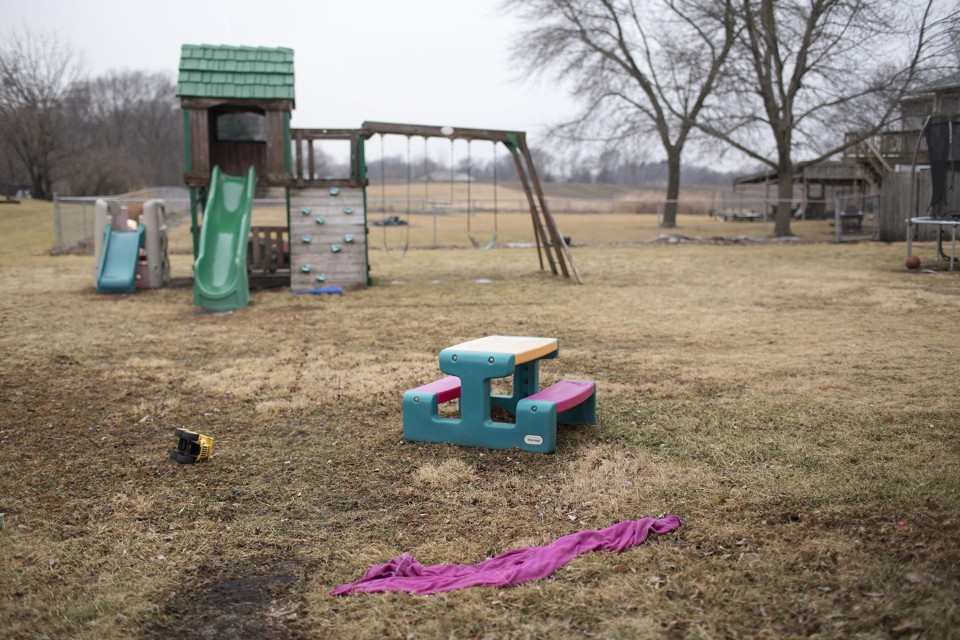For families with children on the autism spectrum, the average weekly cost for behavioral therapy can be as high at $280. More than 3.5 million Americans are affected by Autism Spectrum Disorder, and for families living in rural and underserved areas, treatment of the symptoms of autism is not only costly, but also logistically difficult to access. Telemedicine makes it easier for children with autism to thrive by expanding their care team and breaking the access barriers surrounding the shortage of healthcare providers and behavioral care resources in rural America.

The Green family lives hours away from the nearest qualified ABA provider. Photo: KC McGinnis/Spectrum
For clinicians, functional analysis (FA) and functional communication therapy (FCT) are fundamental in treating the behavioral and social communication challenges that autistic children face every day. Leveraging the Vidyo platform for telehealth, Dr. Scott Lindgren and his team at The University of Iowa Stead Family Children’s Hospital have been studying the advantages of behavioral treatment through in-home telehealth for children with autism. The study seeks to prove the effectiveness of remote FA and FCT behavioral analysis procedures, and the hospital’s Autism Center has already alleviated many of the difficulties that families with children on the autism spectrum face.
Vidyo enables delivery of remote care across vast, rural regions of Iowa, through our platform’s patented layering and routing techniques that are specifically designed to provide highly reliable and resilient video quality across low bandwidth cellular connections and/or spotty WLAN/variable wifi network coverage.
People living in rural America rely on their tight-knit communities and proximity to family for support, but families struggle with living in areas that have no qualified applied behavioral analysis (ABA) providers, and a commute to the nearest ABA specialist can take hours. Families living in small towns in rural communities lack the specialized resources to deal with the day-to-day services that children with autism need. This rural disadvantage creates a gross disparity in access to quality care, and the services provided to these patient populations are often limited. Within these communities, autistic children with significant behavioral challenges lack the access they need to continuous therapy and analysis, and their educational and social development outcomes suffer as a result.
The Green family of Madrid, Iowa, was one of the first to enroll in the trial lead by Dr. Lindgren. An article posted by The Atlantic revealed the family’s frustration with the lack of behavioral care services available for their daughter Izzy, and they were quick to sign up when they learned about a clinical trial that would train parents to use an ABA-like intervention in their own home using telemedicine.

In 2015, the Green family had to drive over 150 miles to a clinic in Iowa City. Photo: KC McGinnis/Spectrum
Through telemedicine, clinicians are able to monitor the behaviors of children with autism in the care setting of their natural home environment and identify the situations in which problem behaviors surface. The convenience of in-home telehealth conferencing through the Vidyo platform is essential for families like the Greens, who were otherwise making unfeasible commutes for care, driving their four year old daughter to a hospital two hours away for a thirty minute ABA session. For the Greens, the trial was a success and according to the article, Izzy’s tantrums dwindled from 20 minutes each day to less than five minutes each day.
The innovation of telehealth proves to be an efficient approach to combatting many of the challenges associated with the cost and access of ABA programs and resources in rural America. The University of Iowa Stead Family Children’s Hospital’s findings showed, through remote care using Vidyo’s patient engagement solutions, families with autistic children saw behavioral challenges associated with Autism Spectrum Disorders reduced by an average of 85 percent among participants, and the weekly cost for care decreased to an average of $58 per participant (a significant decrease when compared to the total cost of $6,000 for sending a therapist to the child’s home over a three-month period). Dr. Lindgren and his team continue their research on ABA through telehealth procedures, and families like the Greens have been positively affected by the results of their clinical trials.
